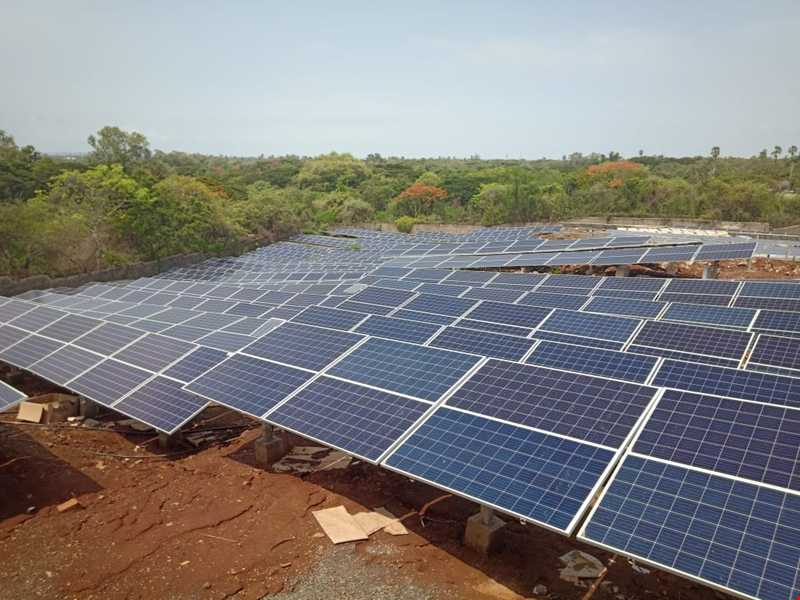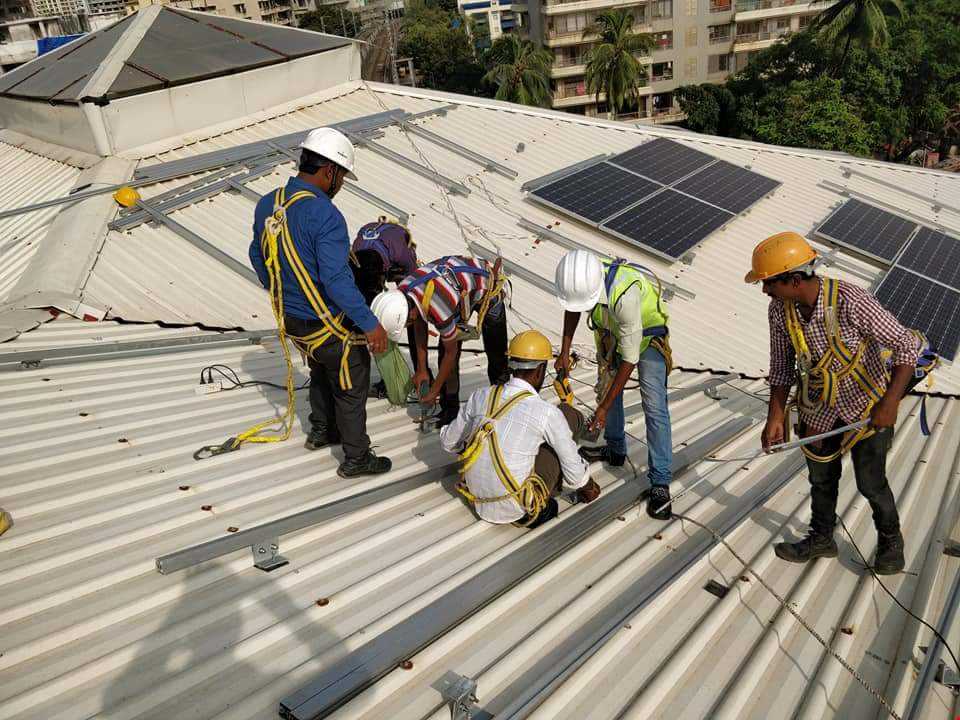Products
Grid Tied Solar Plant
Grid tied, On grid, Utility interactive, Grid inter tie and grid back feeding are all terms used to describe the same concept – a solar system that is connected to the utility power grid. If the grid is off , system will be off.
Advantages of Grid-Tied Systems
Save more money with net metering
A grid-connection will allow you to save more money with solar panels through better efficiency rates, net metering, plus lower equipment and installation costs:
Batteries, and other stand-alone equipment, are required for a fully functional off grid solar system and add to costs as well as maintenance. Grid tied solar systems are therefore generally cheaper and simpler to install.
Your solar panels will often generate more electricity than what you are capable of consuming. With net metering, homeowners can put this excess electricity onto the utility grid instead of storing it themselves with batteries.
Net metering (or feed-in tariff schemes in some countries) play an important role in how solar power is incentivized. Without it, residential solar systems would be much less feasible from a financial point of view.
Many utility companies are committed to buying electricity from homeowners at the same rate as they sell it themselves.
The utility grid is a virtual battery
Electricity has to be spent in real time. However, it can be temporarily stored as other forms of energy (e.g. chemical energy in batteries). Energy storage typically comes with significant losses.
The electric power grid is in many ways also a battery, without the need for maintenance or replacements, and with much better efficiency rates. In other words, more electricity (and more money) goes to waste with conventional battery systems.
According to EIA data, national, annual electricity transmission and distribution losses average about 7% of the electricity that is transmitted in the United States. Lead-acid batteries, which are commonly used with solar panels, are only 80-90% efficient at storing energy, and their performance degrades with time.
Additional perks of being grid-tied include access to backup power from the utility grid (in case your solar system stop generating electricity for one reason or another). At the same time you help to mitigate the utility company`s peak load. As a result, the efficiency of our electrical system as a whole goes up.
Equipment for Grid-Tied Solar Systems
There are a few key differences between the equipment needed for grid-tied, off-grid and hybrid solar systems. Standard grid-tied solar systems rely on the following components:
Grid Tie Inverter (GTI)
What is the job of a solar inverter? They regulate the voltage, frequency, phase angle and current received from your solar panels. Direct current (DC) from your solar panels is converted into alternating current (AC), which is the type of current that is utilized by the majority of electrical appliances.
Power Meter
Most homeowners will need to replace their current power meter with one that is compatible with net metering. This device, often called a net meter or a two-way meter, is capable of measuring power going in both directions, from the grid to your house and vice versa.
You should consult with your local utility company and see what net metering options you have. In some places, the utility company issues a power meter for free and pay full price for the electricity you generate; however, this is not always the case.
Definition: On-Grid Systems are solar pv systems that only generate power when the utility power grid is available. They must connect to the grid to function. They can send excess power generated back to the grid when you are overproducing so you credit it for later use.
Benefits: These are simplest systems and the most cost effective to install. These systems will pay for themselves by offsetting utility bills in 2-5 yrs based on present tariffs.


